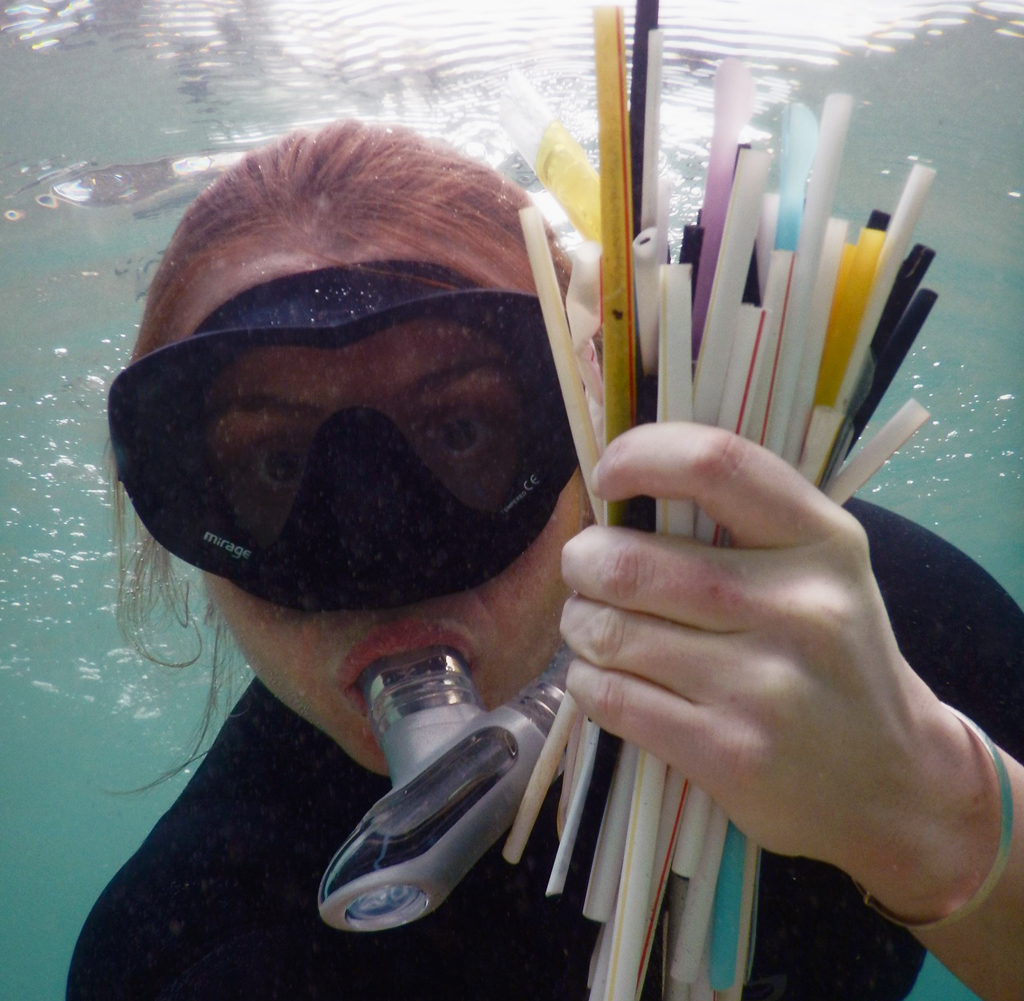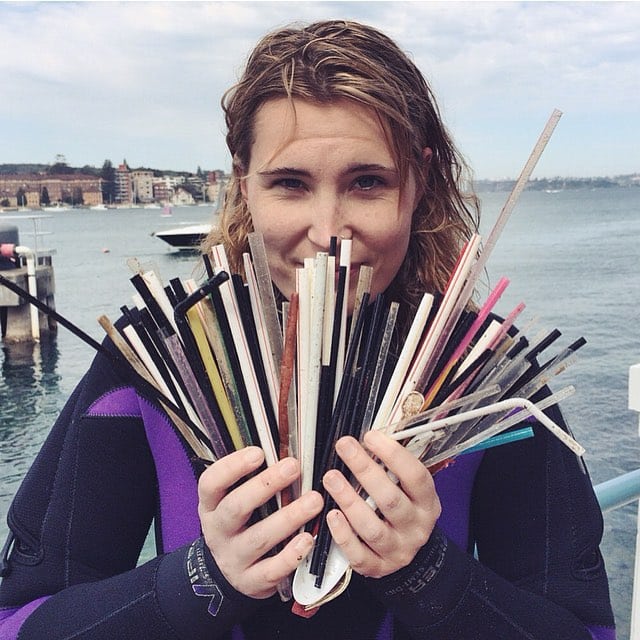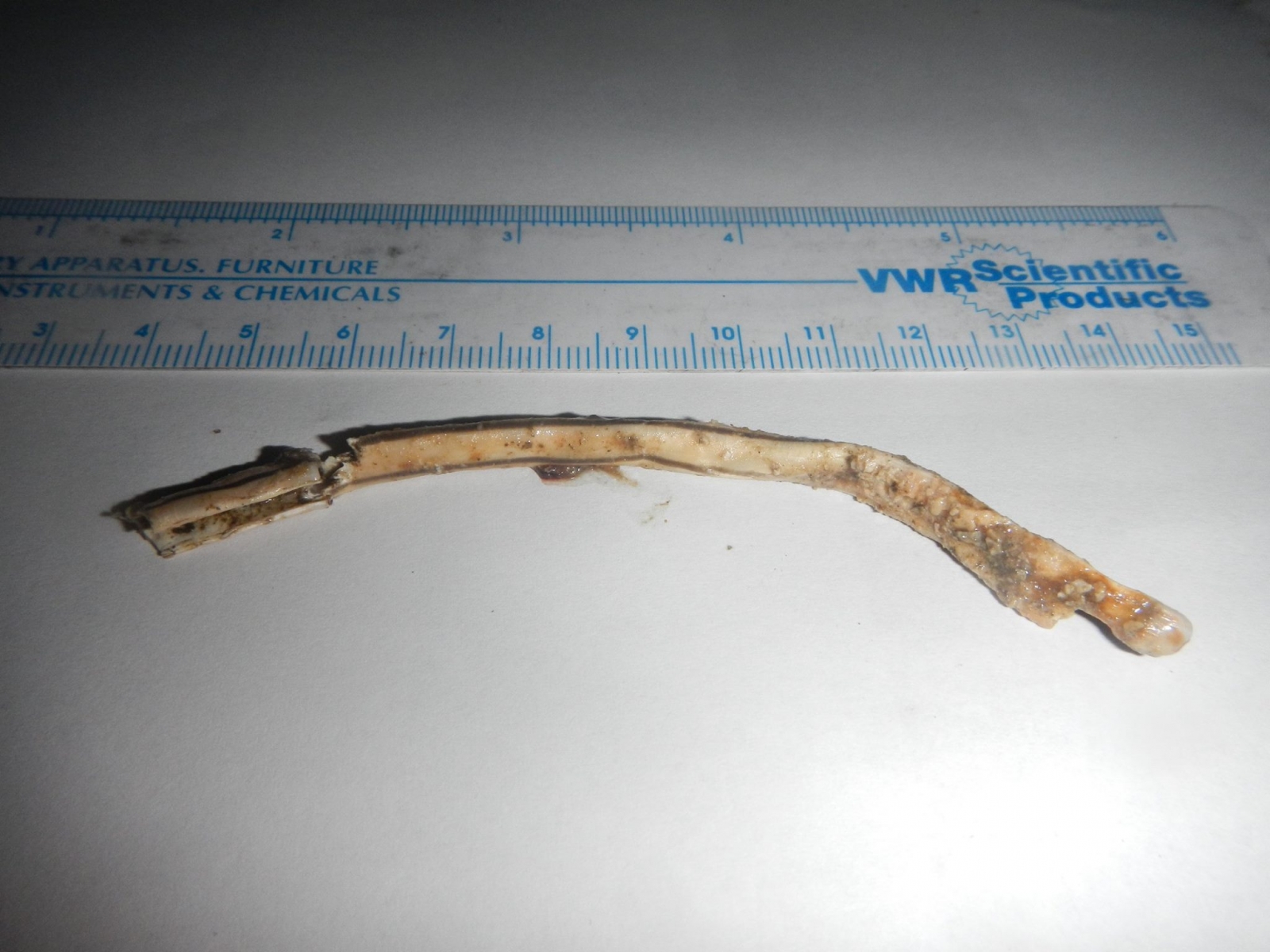Welcome, Diveplanit blogger Harriet Spark! Harriet will be blogging regularly on Diveplanit about marine environment issues, kicking off with the bane of my life: plastic pollution and single use plastic straws.
When people throw the words deadly, dangerous and ocean around in the same sentence you could be forgiven for immediately conjuring up images in your mind of sharks, box jellyfish or that venomous master of disguise, the stonefish.
But what if I was to tell you there is a killer residing in oceans worldwide that’s far more damaging than any of those inhabitants could ever be? A killer that is silent, unexpected and congregating by the thousands.
Most commonly used for slurping up milkshakes and juices or to suck up a margarita on a Friday night, plastic straws are ending up in our oceans by the thousands, and are having devastating effects on precious marine life.
Keen scuba diver and aquarist at Manly SEALIFE Sanctuary, Kasey Turner, was snorkelling after work recently at a popular dive site in Manly, Australia. In the area she found 319 straws on a 20-minute snorkel. 24 hours later Kasey went back and did another and found 294 in the exact same place! The following weekend, inspired by Kasey’s actions, I jumped in for a dive and found another 150, highlighting just how quickly these plastic pollution accumulates.
But what exactly is it about these household items that make them so bad for the ocean?
For one, straws are usually made from plastic. Plastic never breaks down. As time goes by plastic will separate into smaller and smaller pieces, but never completely biodegrades. These pieces can get so tiny that they are then ingested by marine life. Bigger marine life comes along and gobbles up the prey that has just swallowed a chunk of plastic, and so it makes its way up the food chain. When it comes to plastic, there is no such thing as throwing it ‘away’ and it’s estimated that there are over 8 million tonnes of plastic pollution ending up in the ocean every year.
We use plastic straws a lot. In the USA alone, 500 million straws are used every single day. That’s enough to wrap the entire circumference of the Earth a whopping two and half times! So imagine if we multiplied that for every country in the world. It’s a lot of straws. On top of that, straws are a product we use and dispose of pretty quickly. On average, the time we spend sipping on a drink through a straw is a mere 20 minutes, which is an incredibly quick life cycle for an item that is never going to disappear off the planet.
Along with never biodegrading and filling oceans globally, plastic straws are having direct detrimental effects on endangered wildlife. Recently a team of scientists researching sea turtle mating habits in the renowned live aboard dive trip destination; Costa Rica, discovered a male Olive Ridley sea turtle with a 10 cm long plastic straw wedged up its nostril.
At first the group thought the turtle had a parasitic worm blocking its airway, but then realised it was, in fact, a plastic straw. Hours away from veterinary help, the skilled scientists removed it themselves and successfully released the turtle back into the ocean.
They filmed the whole ten minute long ordeal, and uploaded it on Youtube, where it went viral, reaching more than 5 million views and showing the world first hand exactly what the simple straw can do to fragile ecosystems and wildlife. Whilst incredibly graphic, the video served to act as a reminder of the impact simple plastic items can have on the sea.
You can see the full video here, but be warned that it’s not pretty.
The one positive outcome out of this grim video, however, was that it allowed people to make a connection between their own actions and the often devastating outcomes they can have on the natural world. Often, it can be hard for people to see why ditching straws has anything to do with saving sea-life, particularly those without an immediate interest in it. When events like the poor Olive Ridley turtle with plastic stuck in its nose go viral, more and more people see that little things can have big consequences.
By making a few small changes in everyday life, you too can help reduce the number of plastic straws that are ending up in the ocean and littering precious marine environments. If you’re not too fazed about having a straw in your smoothie simply ask your barista or waiter to hold the straw. Easy peasy! If you’re a sucker for straws don’t despair, there are waste-free ways to sip on your beverages. There are plenty of re-usable straw options and many retailers today sell glass, stainless steel and bamboo straws. Ultimately all roads, rivers and hills lead to the sea, so when you see a straw on the ground grab it and chuck it in the bin.
Small actions have big impact when it comes to protecting our underwater playground, and it’s easy for everyone to play their part.
The unfortunate turtle with a straw in its nose was found off Costa Rica.
Costa Rica is home to one of the most diverse and spectacular arrays of marine life, and is an absolutely incredible destination to plan a dive trip. Find out more about live aboard diving in Costa Rica.







when I watch this video, I imagine a straw stuck up my nose and it was horrifying. Poor turtle! I actually like drinks serve with a metal straw, which will be cleaned and reused. It is also more hygenic than plastic straw.
It’s horrific isn’t it? Brings tears to my eyes 🙁 Metal straws are a good alternative – you can also buy straws made of tempered glass.
Hello there!
I wonder whether I could use one of the images above for my petition regarding McDonalds & straws: http://www.thepetitionsite.com/en-gb/778/473/623/tell-mcdonalds-to-replace-one-time-use-plastic-straws-with-paper-straws./
(it’s sort of stalled lately and that may be due to the picture… other petitions of mine have 20,30k signatures on them)
I’m sure Harriet would be okay with it, but I have to ask permission… don’t want to breach photo/design copyright…
Pleeeeease?
Thanks for asking- but just help yourself